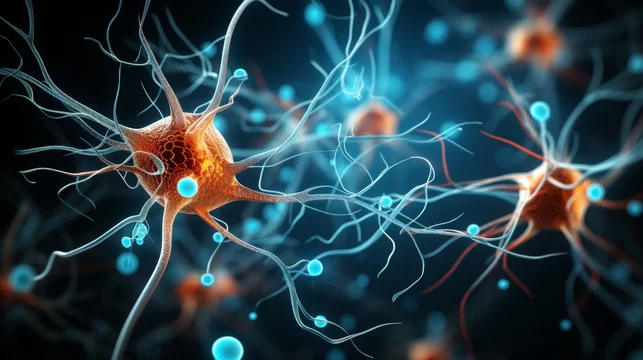Cell biology is a fundamental branch of biological sciences that focuses on the study of cells, their structure, function, and processes. Understanding cell biology is crucial because cells are the basic building blocks of all living organisms. This article will cover the essentials of cell biology, including cell structure, types of cells, cellular processes, and their importance in health and disease. Whether you're a student, a professional in the biological sciences, or simply curious about the microscopic world, this guide will provide a comprehensive overview of cell biology.
What is Cell Biology?
1. Understanding Cell Biology
Cell biology is the study of cells, their physiological properties, their structure, the organelles they contain, interactions with their environment, and their life cycle. It encompasses the molecular and cellular mechanisms that underpin the function and behavior of cells.
Importance of Cell Biology: Cells are the smallest units of life that can perform all necessary functions to sustain life. By studying cell biology, we gain insights into how organisms grow, develop, and maintain homeostasis. It also helps us understand disease mechanisms and develop medical treatments.
Historical Background: The foundation of cell biology was laid in the 19th century with the development of microscopy, which allowed scientists to observe cells for the first time. Key figures include Robert Hooke, who coined the term "cell," and Matthias Schleiden and Theodor Schwann, who proposed the cell theory.
Key Concepts in Cell Biology
1. Cell Theory
Cell theory is a fundamental concept in biology that states:
All living organisms are composed of one or more cells.
The cell is the basic unit of structure and organization in organisms.
All cells arise from pre-existing cells.
Implications: Cell theory provides a framework for understanding the organization and function of living organisms. It underscores the importance of cells in the structure and function of all life forms.
2. Types of Cells
Prokaryotic Cells: These cells lack a nucleus and other membrane-bound organelles. They are generally smaller and simpler than eukaryotic cells. Examples include bacteria and archaea. Key features include:
Nucleoid Region: Area where the cell's DNA is located.
Ribosomes: Sites of protein synthesis.
Cell Wall: Provides structural support and protection.
Eukaryotic Cells: These cells have a nucleus and membrane-bound organelles. They are larger and more complex than prokaryotic cells. Eukaryotic cells can be found in animals, plants, fungi, and protists. Key features include:
Nucleus: Contains the cell's genetic material (DNA).
Organelles: Specialized structures such as mitochondria, endoplasmic reticulum, and Golgi apparatus that perform specific functions.
3. Cell Structure and Function
Cell Membrane: The cell membrane, or plasma membrane, is a lipid bilayer that surrounds and protects the cell. It regulates the movement of substances in and out of the cell through processes such as diffusion, osmosis, and active transport.
Cytoplasm: The cytoplasm is a gel-like substance inside the cell that contains organelles and other cellular components. It is the site of many cellular processes, including metabolism and signal transduction.
Nucleus: The nucleus is the control center of the cell, containing DNA that directs cellular activities and stores genetic information. It is surrounded by a nuclear envelope with pores that regulate the exchange of materials between the nucleus and cytoplasm.
Mitochondria: Often referred to as the "powerhouses" of the cell, mitochondria are responsible for producing ATP (adenosine triphosphate) through cellular respiration. They are involved in energy production and regulation of cell metabolism.
Endoplasmic Reticulum (ER): The ER is a network of membranes involved in the synthesis and transport of proteins (rough ER) and lipids (smooth ER). It plays a crucial role in the production of cellular materials.
Golgi Apparatus: The Golgi apparatus modifies, sorts, and packages proteins and lipids for transport within the cell or secretion outside the cell. It is often described as the cell's "post office."
Lysosomes: Lysosomes are membrane-bound organelles containing digestive enzymes that break down waste materials, cellular debris, and foreign substances. They play a key role in cellular cleanup and recycling.
Cytoskeleton: The cytoskeleton is a network of protein filaments and tubules that provides structural support, maintains cell shape, and facilitates cell movement. It includes microfilaments, intermediate filaments, and microtubules.
4. Cellular Processes
Cell Division: Cell division is the process by which a cell divides to form two new cells. There are two main types:
Mitosis: The process by which somatic cells divide to produce two genetically identical daughter cells. It is essential for growth, repair, and asexual reproduction.
Meiosis: The process by which germ cells (sperm and eggs) divide to produce four genetically diverse cells. It is crucial for sexual reproduction and genetic diversity.
Cellular Respiration: Cellular respiration is a metabolic process that converts glucose and oxygen into ATP, carbon dioxide, and water. It is the primary way cells generate energy to perform various functions.
Photosynthesis: Photosynthesis is the process by which plant cells convert sunlight, carbon dioxide, and water into glucose and oxygen. It is essential for energy production in plants and contributes to the global oxygen supply.
Protein Synthesis: Protein synthesis is the process by which cells build proteins based on genetic instructions. It involves transcription (copying DNA into RNA) and translation (assembling amino acids into proteins).
Applications of Cell Biology
1. Medicine and Health
Understanding Disease: Insights from cell biology help researchers understand the cellular mechanisms underlying diseases such as cancer, genetic disorders, and infectious diseases. This knowledge aids in the development of targeted therapies and treatments.
Stem Cell Research: Stem cells have the potential to differentiate into various cell types and are used in regenerative medicine to repair or replace damaged tissues and organs. Cell biology research is crucial for advancing stem cell therapies.
Drug Development: Cell biology techniques are used to screen and test new drugs, assess their effects on cellular processes, and evaluate their safety and efficacy.
2. Biotechnology
Genetic Engineering: Techniques such as CRISPR-Cas9 allow scientists to modify genes within cells. Genetic engineering has applications in agriculture, medicine, and research.
Cell Culture: Culturing cells in the laboratory allows researchers to study cellular behavior, test drug effects, and produce biological products such as vaccines and antibodies.
3. Environmental Science
Ecology: Understanding the cellular mechanisms of organisms helps in studying their interactions with the environment. This knowledge is vital for addressing environmental issues and conservation efforts.
Bioremediation: Cells and microorganisms are used to clean up environmental pollutants. Cell biology helps optimize bioremediation processes and develop strategies for pollution control.
Recent Advances in Cell Biology
1. Single-Cell Analysis
Recent advancements in technology have made it possible to study individual cells rather than populations. Single-cell analysis provides detailed insights into cellular heterogeneity, gene expression, and cellular responses.
2. Advances in Microscopy
Innovations in microscopy, such as fluorescence microscopy and electron microscopy, have enhanced our ability to visualize and study cellular structures and processes at unprecedented resolutions.
3. Synthetic Biology
Synthetic biology combines principles from biology, engineering, and computer science to design and construct new biological parts, devices, and systems. It holds promise for applications in medicine, agriculture, and environmental science.
Conclusion
Cell biology is a fundamental field of science that provides essential insights into the structure and function of cells. By understanding key concepts such as cell theory, cell structure, and cellular processes, we gain a deeper appreciation of the complexity and functionality of living organisms. The applications of cell biology in medicine, biotechnology, and environmental science highlight its importance in advancing our knowledge and addressing real-world challenges. Whether you are exploring cell biology for academic purposes or out of curiosity, mastering these basics will enhance your understanding of the intricate world of cells and their role in life.

